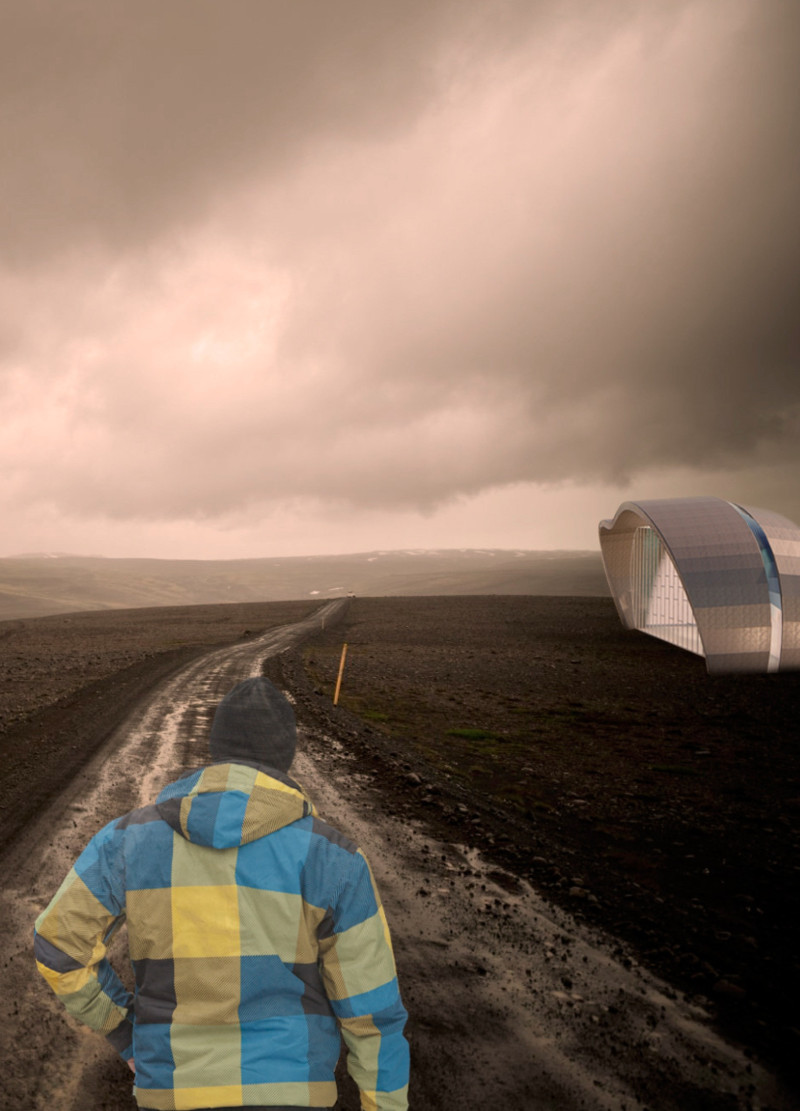5 key facts about this project
The Volcano Museum in Iceland is designed to blend into the stunning landscape of the Myvatn region, recognized for its unique geological features and natural beauty. The museum offers space for exhibitions, educational activities, and public interaction, fostering a connection between visitors and the environment. The design focuses on flexibility, allowing it to engage with the surrounding nature while accommodating various uses.
Architectural Concept
The design emphasizes openness and adaptability, resulting in dynamic spaces that encourage interaction among visitors. This approach mirrors the natural surroundings, allowing the museum to relate thoughtfully to its environment. Inside, the layout separates public areas from more private spaces, placing visitor-focused elements on the ground floor and secluding other functions on the upper levels.
Spatial Organization
The ground floor includes a hall, reception area, confectionery, and exhibition spaces, all crafted to enhance visitor engagement with the landscape. These areas invite exploration and allow guests to connect with the museum's offerings. The first floor is dedicated to coworking spaces, private offices, and meeting rooms, supporting the varied functions of the museum.
Materiality and Climate Response
The design considers the local climate, incorporating enclosed spaces that protect users from the wind and snow typical of the area. The material choices are intentional and practical. Double tempered glass enhances the natural light that fills the building while providing necessary thermal properties. A metal stereostructure made of cylindrical tubes and aluminum knots forms the core of the design, providing strength without an overwhelming appearance. The exterior is clad in stainless metal, reflecting an emphasis on durability and minimal upkeep in harsh conditions.
Design Detailing
Interior finishes include gypsum board, which creates a clean and modern look that aligns with the overall design intent. The careful selection of materials not only improves the museum's functionality but also resonates with the natural setting. This connection between the building and its environment promotes a sense of harmony, encouraging visitors to appreciate both the architecture and the surrounding landscape.






















































